Indulge in the flavors of a Creekstone Farms 3-bone Prime Rib Roast, prepared with Bear & Burton's W Sauce. The roast is generously slathered with The W Sauce and adorned with the bold notes of Cattleman’s Grill Lone Star Brisket Rub. Searing to perfection in Cornhusker Kitchen Beef Tallow, the roast is then pampered with a rich butter baste, featuring a blend of unsalted butter, horseradish, garlic, and more W Sauce! Roasted directly over the flame on the Yoder Smokers YS640s Pellet Grill to an internal temperature of 130ºF ensures a melt-in-your-mouth experience. The finishing touch is an exquisite au jus crafted from a marriage of beef stock, red wine, and Bear & Burton’s W Sauce. Rested to let the juices redisperse, this prime rib is served with a side of the flavorful skillet sauce, inviting you to savor each sumptuous bite.
Prime Rib Roast Au Jus
Tom Jackson
Rated 3.7 stars by 35 users
Category
Beef
Cuisine
French
Servings
10
Prep Time
20 minutes
Cook Time
2 hours 5 minutes
Calories
185
Elevate your culinary journey with a Creekstone Farms 3-bone Prime Rib Roast, a true spectacle of flavor and tenderness. Begin the symphony of taste by generously applying Bear & Burton’s W Sauce and a dash of Cattleman’s Grill Lone Star Brisket Rub, setting the stage for a mouthwatering experience. Searing in a bath of Cornhusker Kitchen Beef Tallow on the Yoder Smokers YS640s Pellet Grill, this prime rib achieves the perfect balance of smokiness and succulence. The pièce de résistance is the butter baste, a luxurious blend of unsalted butter, horseradish, garlic, and Worcestershire, which envelops the roast in a luscious embrace. As the roast reaches an internal temperature of 130ºF, the flavorful au jus, a symphony of beef stock, red wine, and Bear & Burton’s W Sauce, awaits its starring role. Rested and ready, this prime rib is presented with a dipping sauce, inviting you to revel in a culinary masterpiece that promises an unforgettable dining experience.
Ingredients
- Creekstone Farms 3-bone Prime Rib Roast (7 lb)
-
Bear & Burton’s W Sauce (Worcestershire)
-
Cattleman’s Grill Lone Star Brisket Rub
-
2 tbsp Cornhusker Kitchen Beef Tallow
- 1/2 cup unsalted butter, softened
- 1 tbsp prepared horseradish
- 1 tbsp garlic, grated on microplane
-
1 tbsp Bear & Burton’s W Sauce (Worcestershire)
- 2 cups beef stock
- 1/2 cup red wine
-
1 tbsp Bear & Burton’s W Sauce (Worcestershire)
Butter baste:
Au jus:
Directions
- Preheat your Yoder Smokers YS640s Pellet Grill to 450ºF set up for direct grilling with the diffuser or diffuser door removed. Place a Lodge 12” Cast Iron Skillet over the flame.
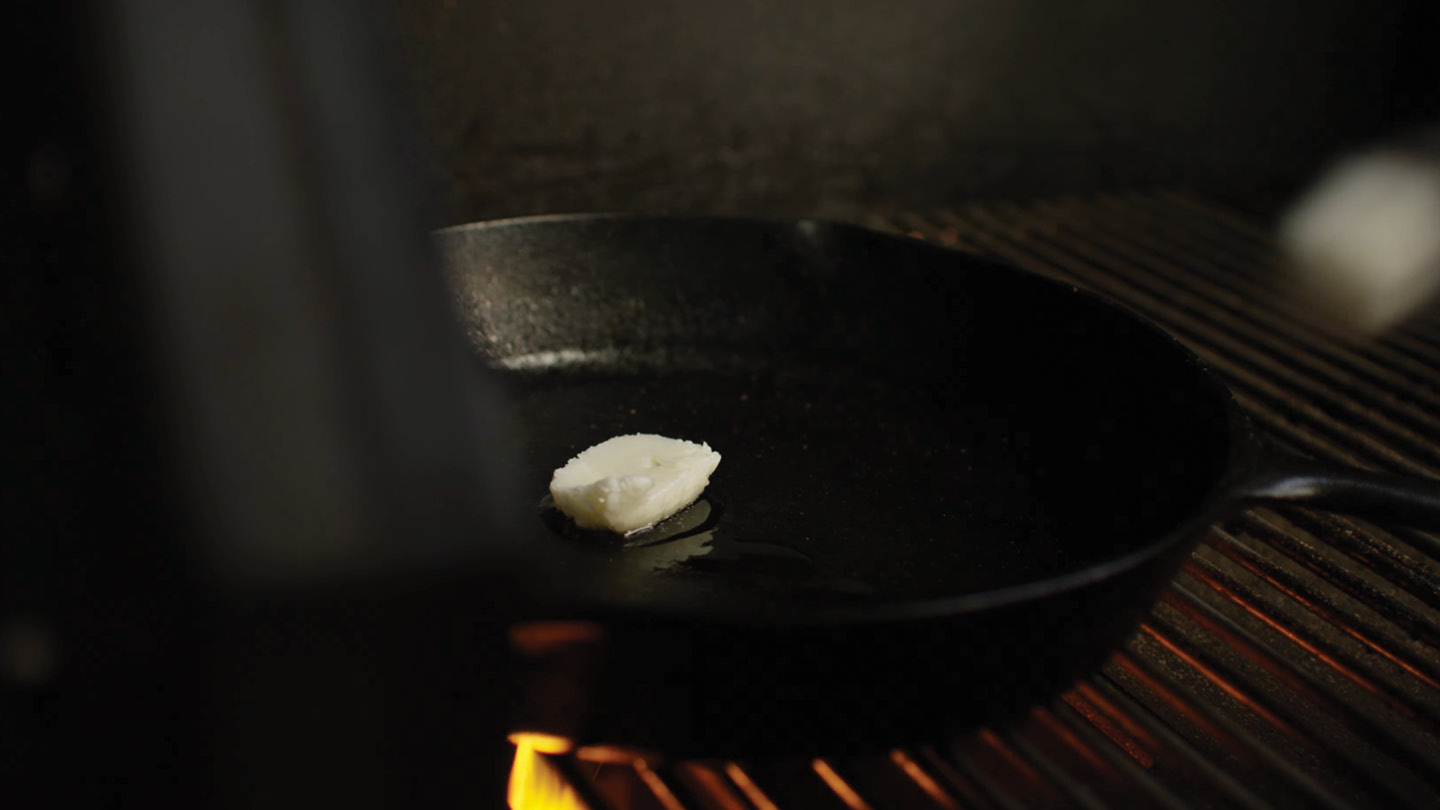
- Slather your rib roast with The W Sauce. Season with Cattleman’s Grill Lone Star Brisket Rub.
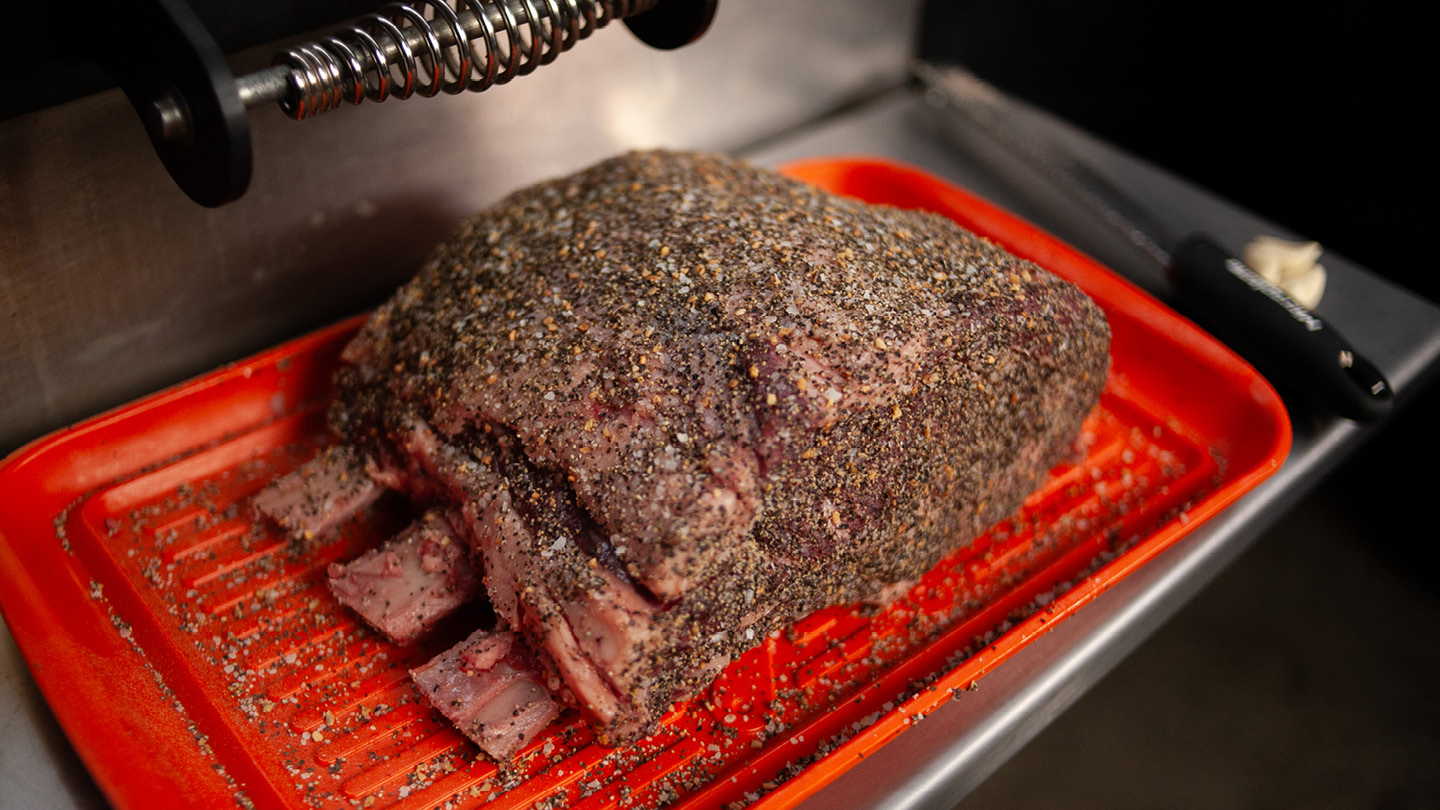
- Melt the beef tallow in the skillet. Sear the roast on all sides, then remove and transfer to a wire roasting rack.
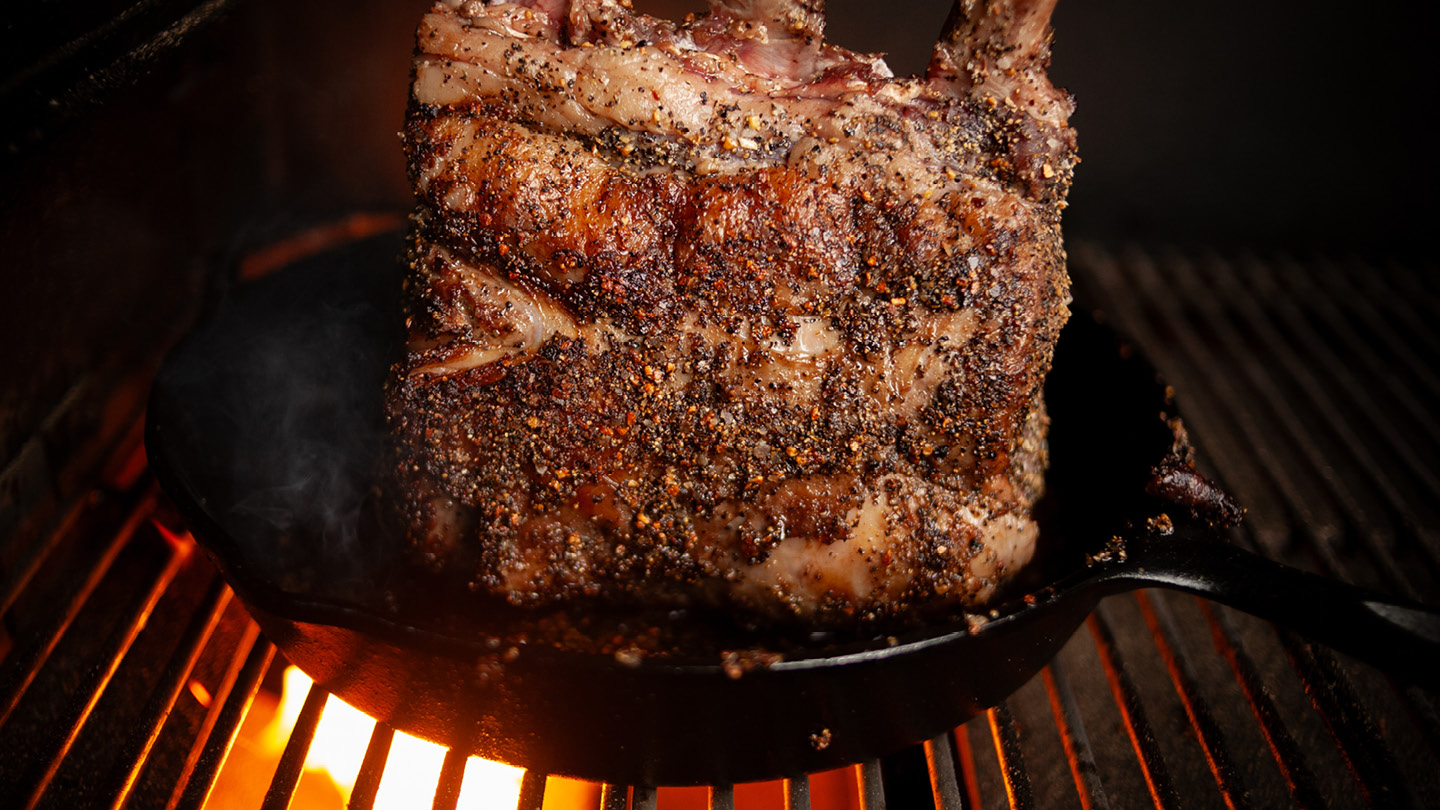
- Deglaze skillet with wine. Scrape with wooden spoon. Add the beef stock and The W Sauce to skillet.

- Place the rib roast on wire rack over the skillet, and move to the indirect side of the grill, away from the flame.
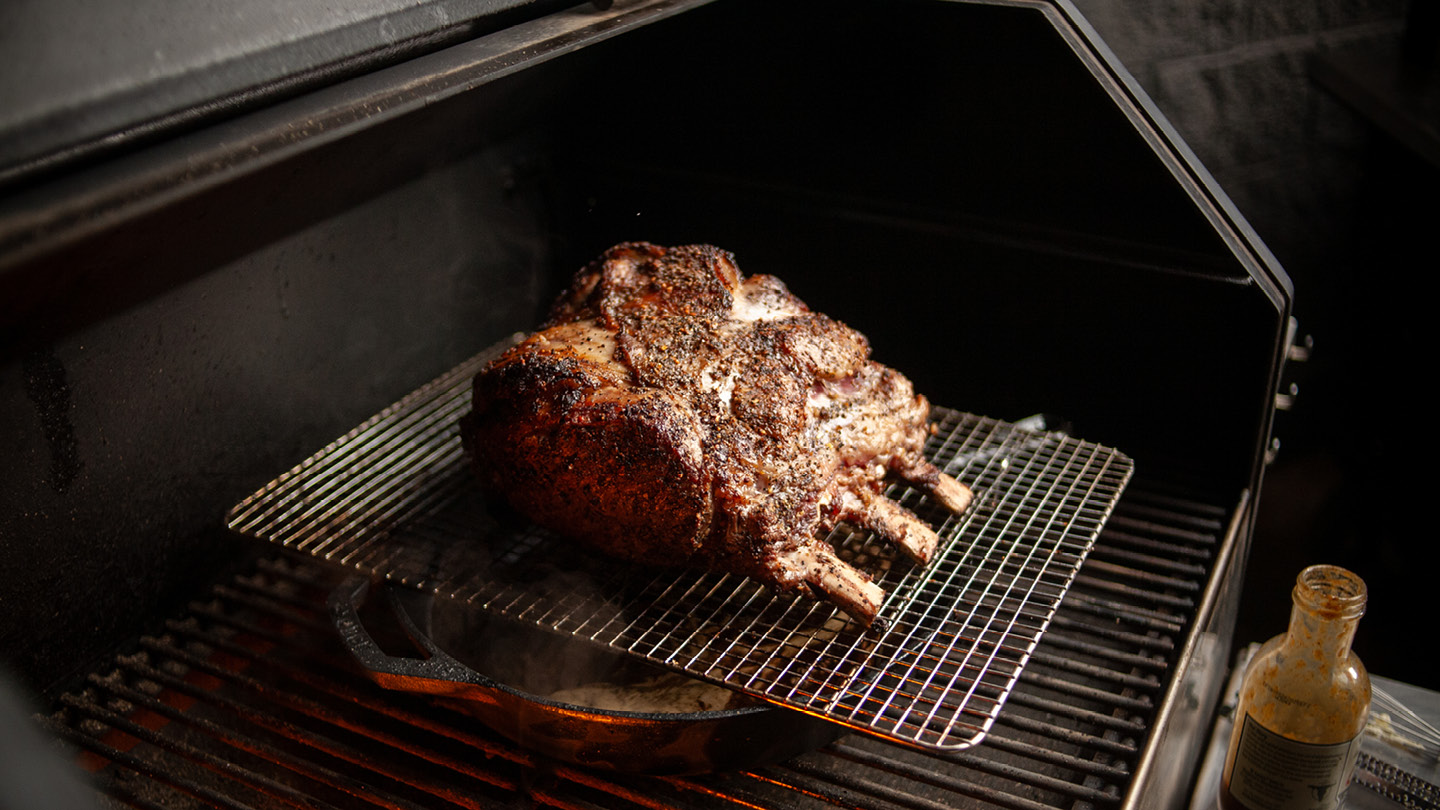
- To make the butter baste, combine all ingredients and mix well. Rub the roast with the butter baste.
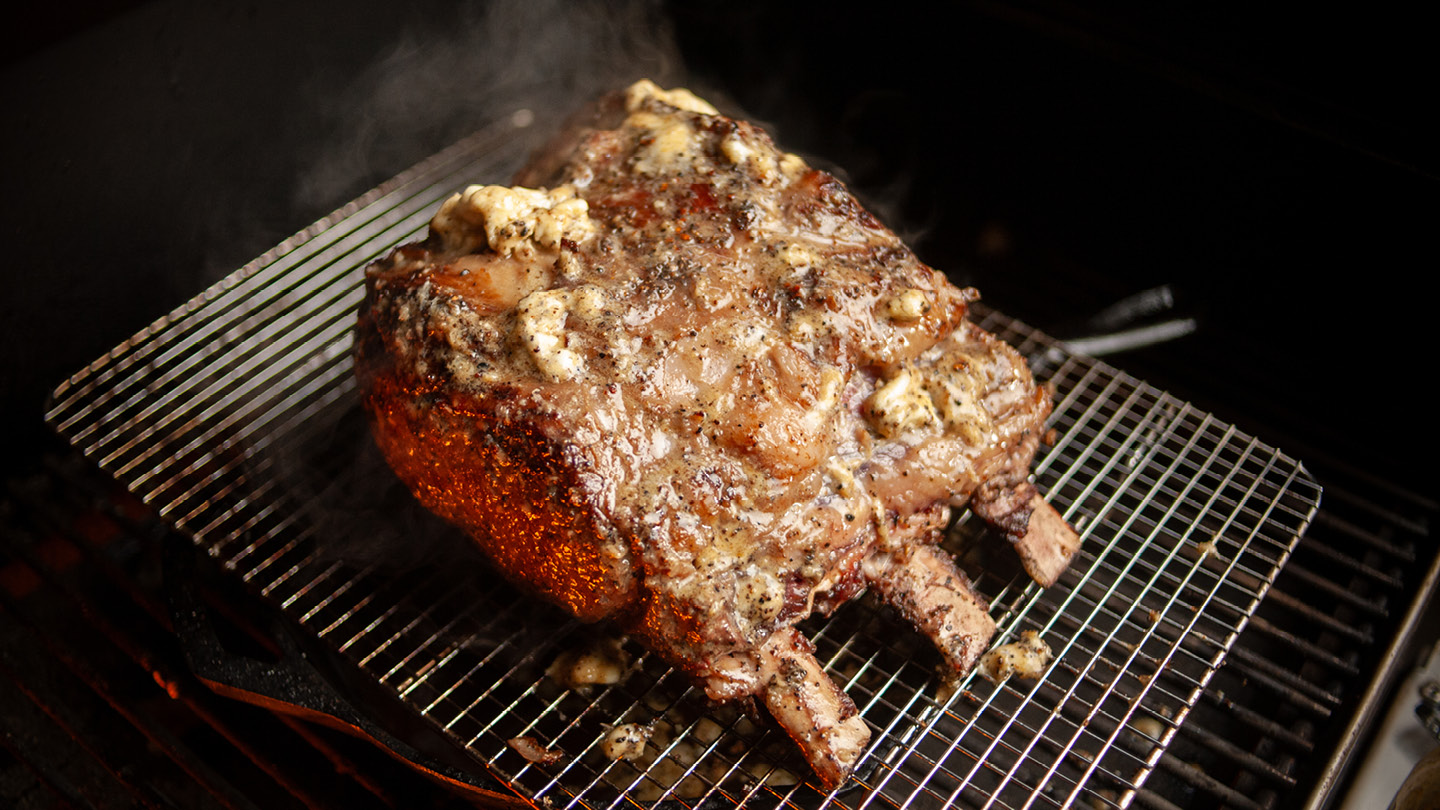
- Cook the roast to an internal temperature of 130ºF. Remove from the grill. Rest for 20-30 minutes to let the juices redispense.
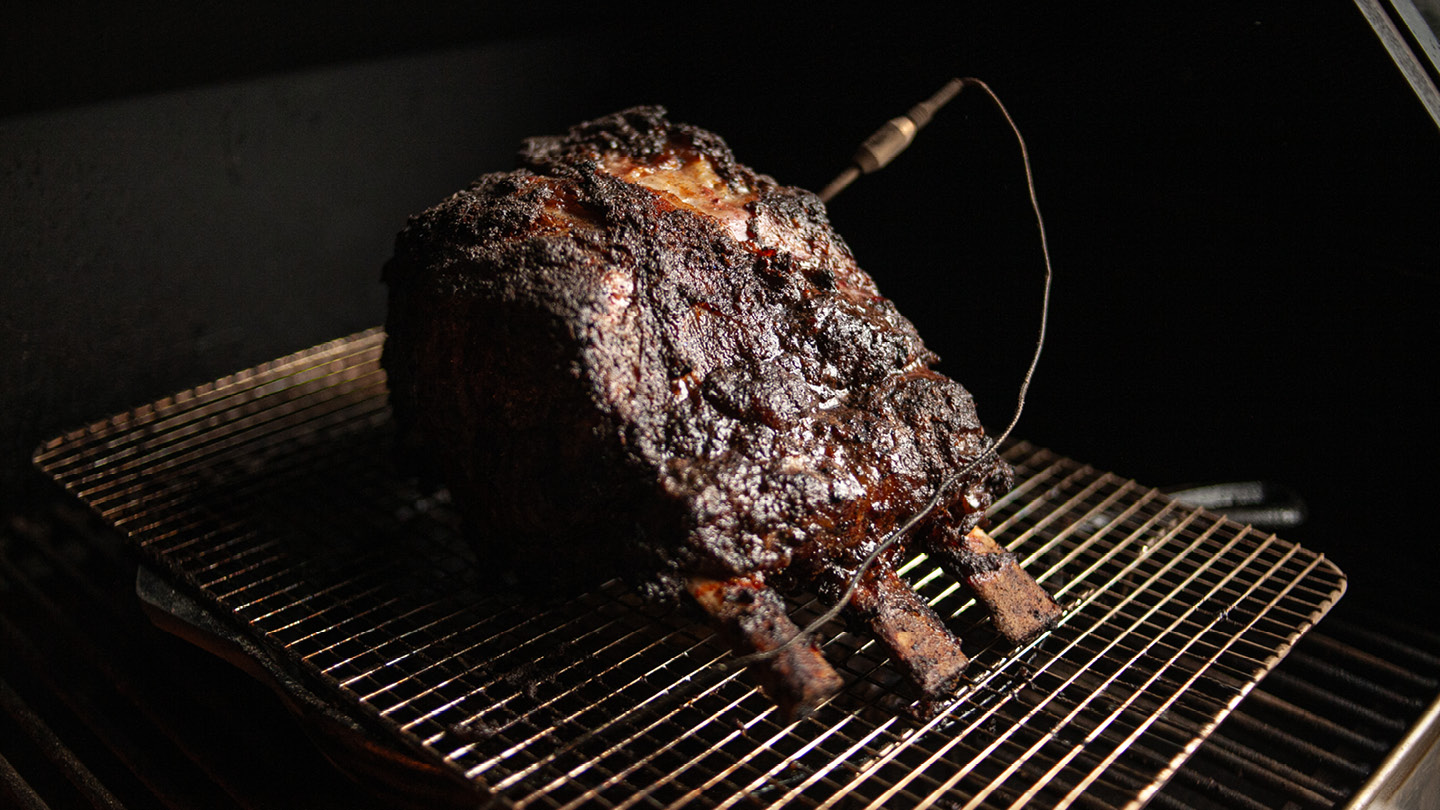
- Slice and serve with the sauce from the skillet for dipping.
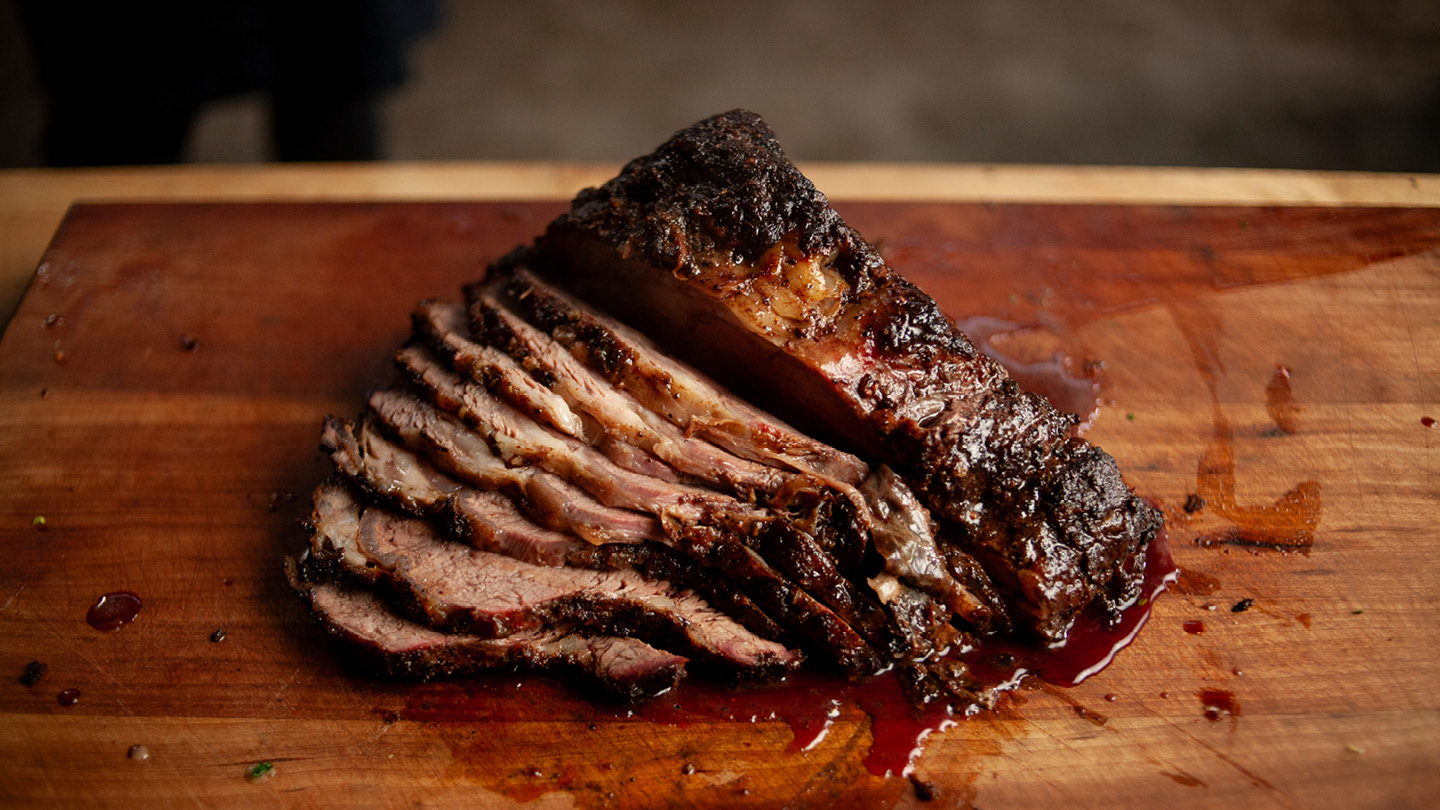
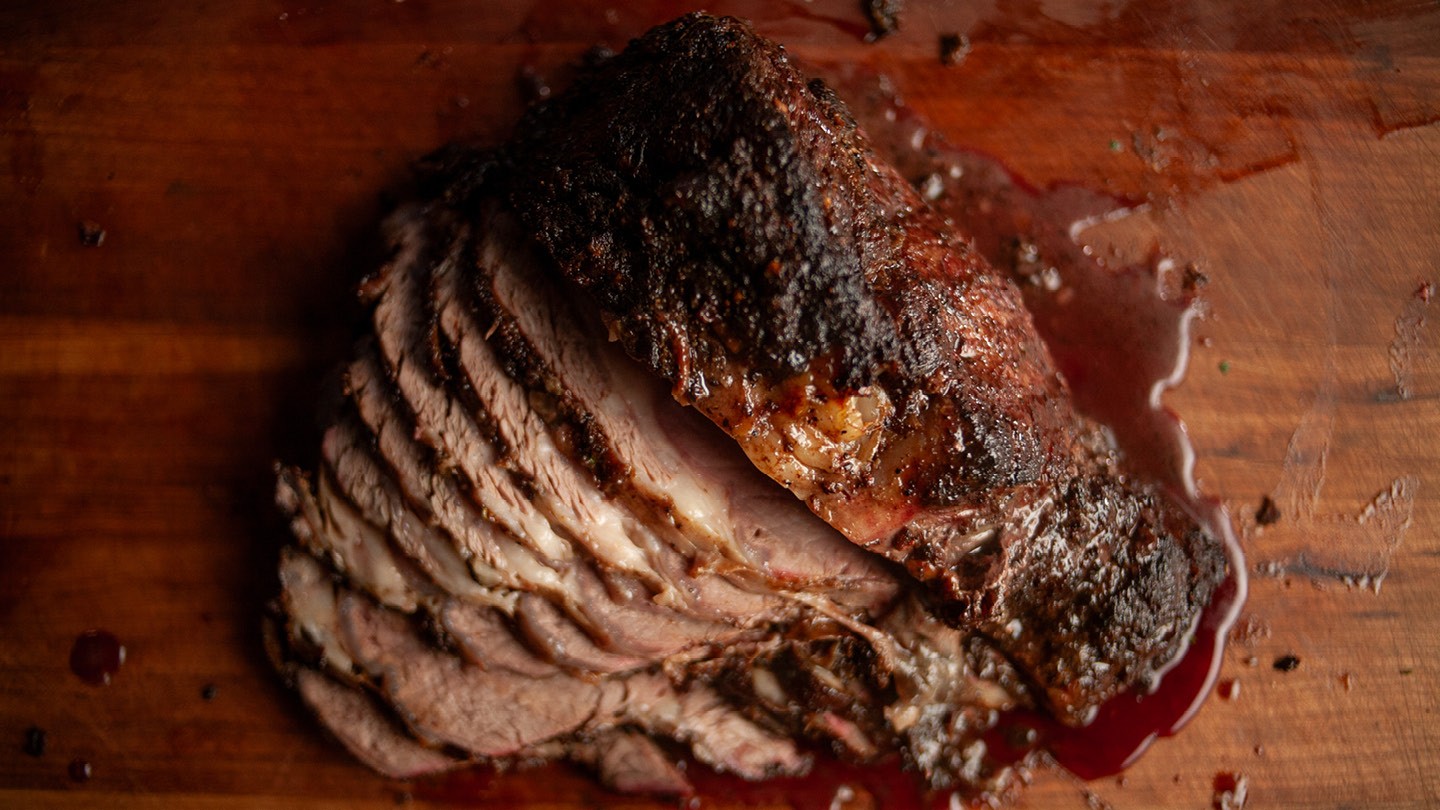
Recipe Note
Other Recipes You Might Enjoy:
Chateaubriand Bacon Wrapped Green Beans
Recipe Highlights and Insights:
The term "au jus" is French, translating to "with juice" in English. In culinary contexts, it refers to a sauce or gravy made from the natural juices released by meat during cooking. The history of au jus is closely tied to French cuisine and traditional methods of serving meats.
1. French Culinary Roots:
The concept of serving meats with their natural juices dates back to classical French cuisine. French chefs have long appreciated the flavors that develop during the cooking process, and they sought to capture and enhance those flavors in the final presentation.
2. Early Usage:
The practice of serving meat au jus became more formalized in the 19th and early 20th centuries. It was especially associated with roast meats, where the pan drippings and juices would be collected and used to create a simple, yet flavorful sauce.
3. Classic Techniques:
In classic French cooking, chefs would often use a roasting pan to cook meats. After roasting, the meat would be removed to rest, and the pan would be deglazed with liquid, such as wine or stock, to create a rich and savory sauce. This sauce, enhanced with the natural juices and caramelized bits from the pan, was then served alongside the meat.
4. Evolution in American Cuisine:
The concept of serving meats au jus found its way into American cuisine, where it became particularly popular in dishes like the French Dip sandwich, where thinly sliced roast beef is served on a roll, and the jus is used as a dipping sauce.
5. Modern Variations:
Today, the term "au jus" is not limited to French or formal culinary settings. It has become a more general term used to describe any dish served with its natural juices or a light, flavorful sauce. It can be applied to various meats, including prime rib, beef, lamb, and more.
In essence, au jus reflects a culinary philosophy that values the natural flavors of meat and seeks to present them in a simple and delicious way, adding depth and moisture to the dish.
Nutrition
Nutrition
- Serving Size
- 6 oz
- per serving
- Calories
- 185
- Fat
- 10.3 grams
- 13%
- Saturated Fat
- 5.4 grams
- 27%
- Cholesterol
- 11 milligrams
- 4%
- Sodium
- 522 milligrams
- 23%
- Carbs
- 10.4 grams
- 4%
- Fiber
- .5 grams
- 2%
- Sugar
- 6.9 grams
- Protein
- 5.2 grams